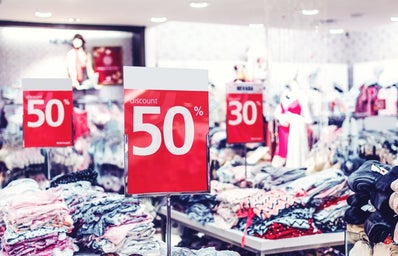It probably comes as no surprise to say that Fashion is the second most polluting industry in the world. Among issues surrounding poor wages and working environments for many of its employees, fast fashion brands also use mass producing techniques and cheap, toxic textile dyes to keep up with the trends.
Fast fashion provides inexpensive, mass produced clothes, allowing companies like Zara, Shein and H&M to keep up with every trend, whether it last two years or two weeks. It uses trend replication and low-quality materials in order to keep its costumers coming back. Prices are dropping, and so is the quality, whilst fashion trends are accelerating. Think of TikTok and the first national lockdown, everyone on the app saw how fast trends spread across our country and suddenly everybody was dying for the vintage spell-out jumpers and tennis skirts. But where has this trend gone now?
Fast fashion brands, such as Shein and Aliexpress thrived as TikTok provided an immediate source of trend prediction for them and they were able to make billions of pounds every time a new trend surfaced. So how do we keep up with trends and find new clothes we love, without contributing to climate change, and without supporting businesses who don’t care about their workers or their customers?
Awareness
One of the easiest ways to combat fast fashion is awareness. The first step in anything is being aware of the issue, for example if you weren’t aware of this you probably wouldn’t be reading this article. Posting about the recent Shein scandal on your Instagram story could help even just one-person realise the damaging effects of this industry and maybe think twice about where they source their clothes. We all can play our part in raising awareness to the issue.
Do a clear-out
This may sound counter-intuitive but clearing out your closet can help you grasp an idea off what clothes you actually need and what style direction you want to keep going in, rather than buying for the sake of buying. It also gives you an opportunity to donate them to charity, potentially helping someone else who is trying to shop more sustainably to find clothes they like too.
Buy Less
This is the most obvious answer, although admittedly I really struggle with this one, particularly when you need a bit of retail therapy. Unfortunately, the easiest way to avoid contributing to the fashion industry’s pollution. Before you press checkout, really take a moment to consider if you really need these clothes.
Watch where you buy from
Whilst at first this may seem hard to do, with a little bit of research you can easily find brands to avoid when shopping. Try the ‘Good on You’ app; you simply enter the name of the brand and the app provides easy to read information about the company’s practices regarding environmental impacts and labour rights.
Another super easy way to start combating fast fashion is to stop shopping from Shein and Aliexpress. As previously mentioned, these brands had a massive surge in popularity during the last year and the last few lockdowns. Not only are shops like these bad for the environment and their workers, but they also have a tendency to copy small business’s designs. Doing this is incredibly detrimental to these smaller shops who are struggling enough as it is during the pandemic.
Shop Small and Sustainable
I am sure you have heard this a thousand times already – shopping small and sustainable is almost a trend in itself at the moment. Small businesses are typically very sustainable as they use techniques such as drops and recyclable packaging. Doing ‘drops’ means they only make a certain amount of a product and once it is sold out it’s gone completely. This may sound stressful but this way you get a beautiful, often handmade item, that less people have and is much better quality that the mass produced options. You also generally get the best experience with these shops as they genuinely care about their customers and want you to have a fun, easy, reliable shopping experience.
30 Wear Rule
This rule was created by Livia Firth (who founded the sustainability consultancy Eco-Age). It stands as a great way to check whether or not you actually want an item. Next time you go to buy something try asking can I wear this item thirty or more times? If not, maybe don’t buy it.
Alternative places to buy from…
Whilst buying from sustainable brands is fantastic and a really important way to support small businesses who have been screwed over by the pandemic, sometimes their price ranges just aren’t that accessible. So, what are your other options?
Depop – this is the most well-known app for re-selling secondhand items, and it is always worth checking when you find an item you want. There are some fantastic vintage stores and small businesses on their as well as regular people just trying to get a little bit of money for their old clothes. However, with the rise of the ‘Depop Girl’ the site is experiencing the kind of gentrification that has happened to Vintage stores over the years as the vintage style as become more popular.
Vinted/Ebay – When at a loss on Depop, try Vinted or eBay. Usually, I would suggest Charity shops first and foremost, as these often have some great finds and not only do you get new, sustainable clothes, but it is the easiest way to support a charity. However, with the UK in lockdown, Vinted and Ebay are the charity shops of the cyber world. You may need some patience to scroll through these websites in order to find the perfect item, but both have a great filter system and the items are typically much, much cheaper.
(P.S I’ve listed some of my favourite small businesses/depop shops at the moment for you below…)
Issey Mayes
Isabella Vrana
Clueluce
Susamusa – a lot of handmade as well as second hand
Notjusttrash – depop
Pasttrash
Oliviaeaston
Pelicans and Parrots – specialises in Italian vintage
Sanchos



